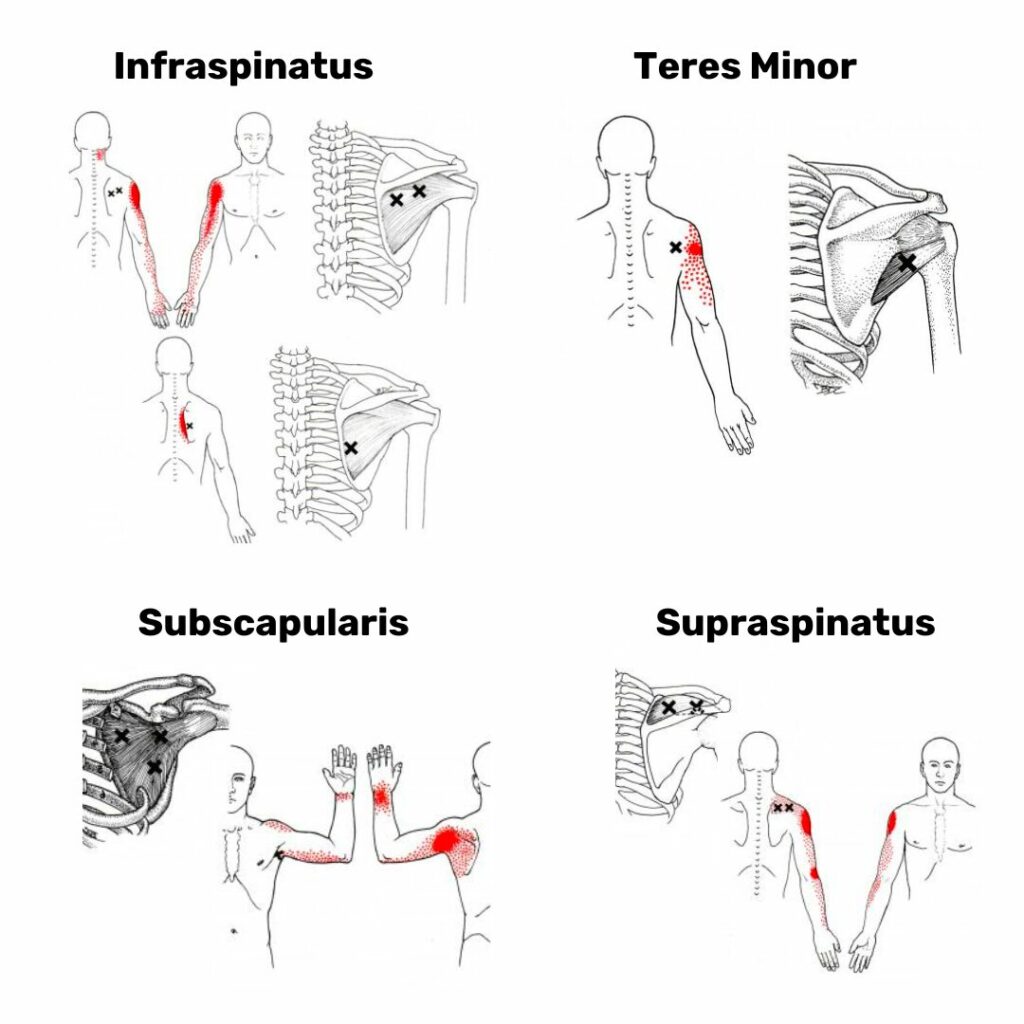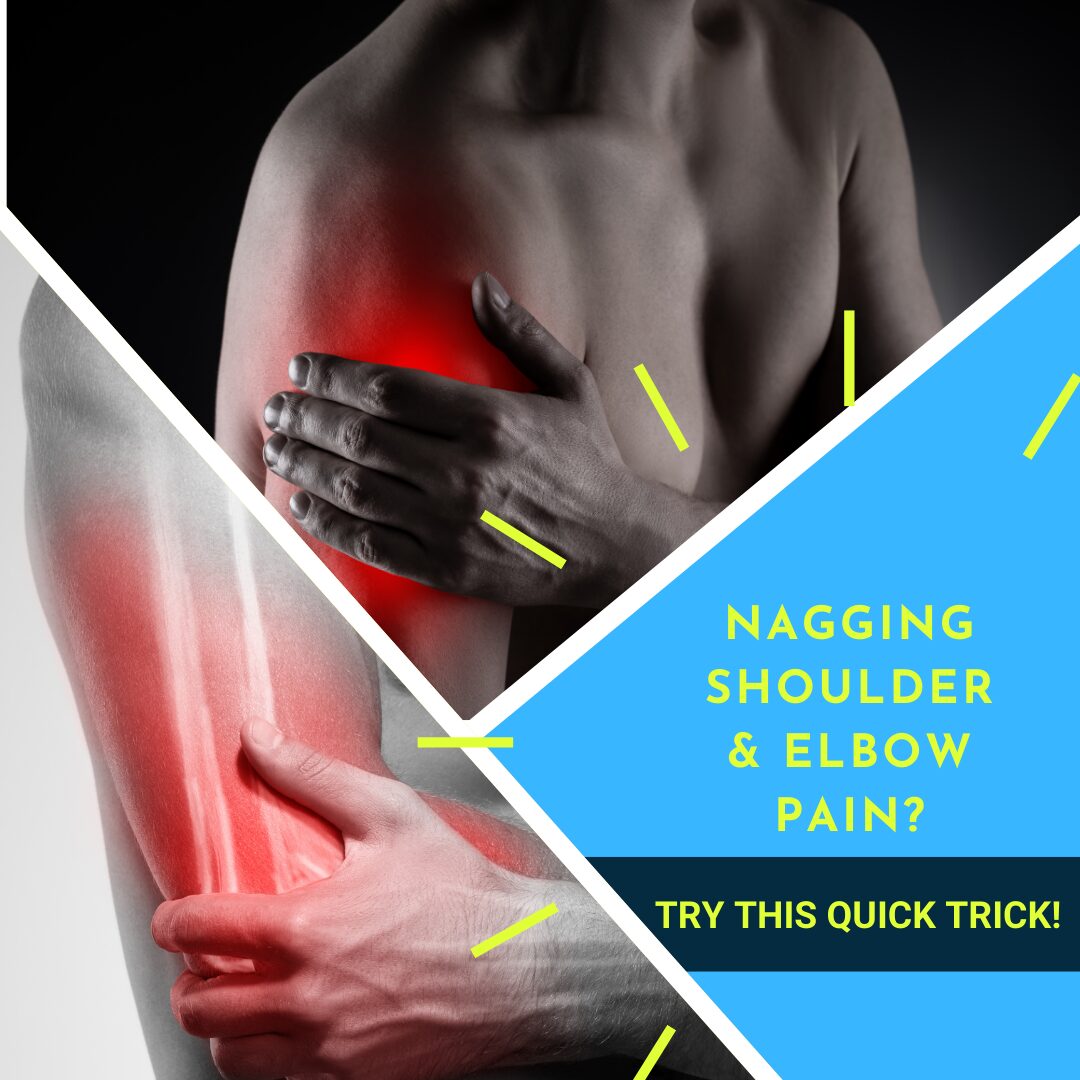The shoulder is one of the more complex parts of the body, partly due to its bony anatomy and partly due to its intricate soft tissue attachments. It is made up of 4 different joints: the glenohumeral joint, acromioclavicular (AC) joint, sternoclavicular (SC) joint and scapulothoracic joint. The glenohumeral joint (AKA the ball and socket joint) is what we typically think of as the shoulder joint. It is extremely mobile and, by itself, very unstable. To accommodate for its bony instability, the glenohumeral joint is given more stability by the labrum and the muscles that surround the joint. These muscles are commonly referred to as the Rotator Cuff (RTC).
The RTC muscles are essential to the proper function and mechanics of the shoulder. At times, due to overuse or injury, these muscles can become irritated and tight. When this occurs, people will often complain of pain along the outside of the arm or pain in the elbow. We call this referred pain, as it occurs at a location that is different from its point of origin. All muscles in the body have common trigger point referral patterns.
Below you will see the referral pattern of the rotator cuff muscles:

As you can see above, almost all of the rotator cuff muscles refer pain to the outer shoulder/arm. The supraspinatus and infraspinatus often also refer pain to the elbow.
How to Alleviate the Pain?
Often, performing a soft tissue release of the RTC muscles helps to reduce their tension and irritability and subsequently to alleviate that outer arm and elbow pain.
If you are experiencing this type of pain, try a rotator cuff release using a tennis ball or lacrosse ball as shown in the video below.
- Start by checking your pain and range of motion before the treatment.
- Identify the muscle that you are targeting.
- Place the ball behind your shoulder at targeted location and lie down on the ball so that you feel a firm pressure at the desired location. (This spot should feel sore and might even refer pain to the outer arm or elbow as you place pressure on it).
- Once you have identified the right spot that recreates your pain, hold pressure there for 10-20 seconds.
- Now, slowly raise your arm overhead and back down. Repeat 5-10 times.
- Next, bring your arm out away from your body at a 90 deg angle and bend the elbow to 90 degrees.
- Slowly rotate the arm forward and backward, bringing the shoulder into internal and external rotation. Repeat 10 times.
- Recheck your pain and range of motion to see if you have made a change.
- Try a different spot and repeat the steps above.
Pro Tip: If this is too painful or too aggressive, you can also try doing the same release standing with the ball up against a wall.
We hope that this little trick helps to alleviate some of your nagging shoulder and elbow pain!
If you try this rotator cuff release and do not notice any change or are still experiencing pain, you may benefit from a more thorough assessment of your shoulder, neck and/or elbow by a movement specialist. There are many other reasons why people can experience pain in these regions and identifying the proper source of the pain is imperative to getting relief. We’d be happy to help!

